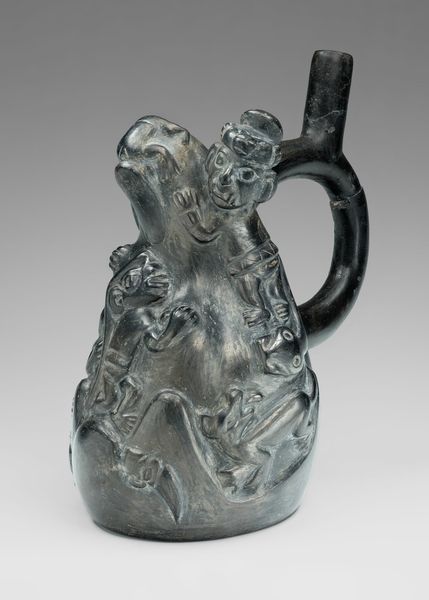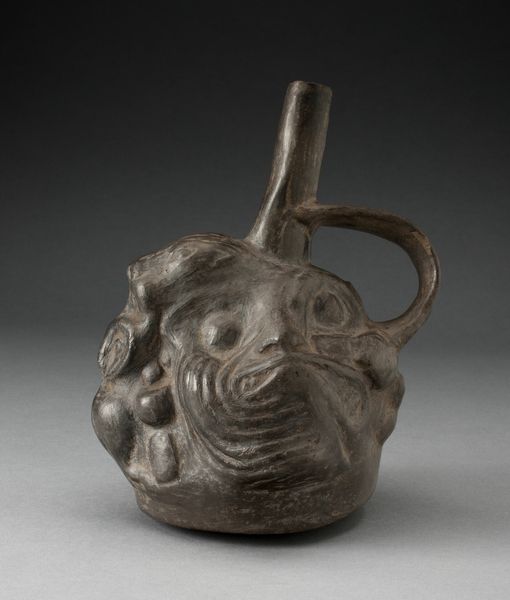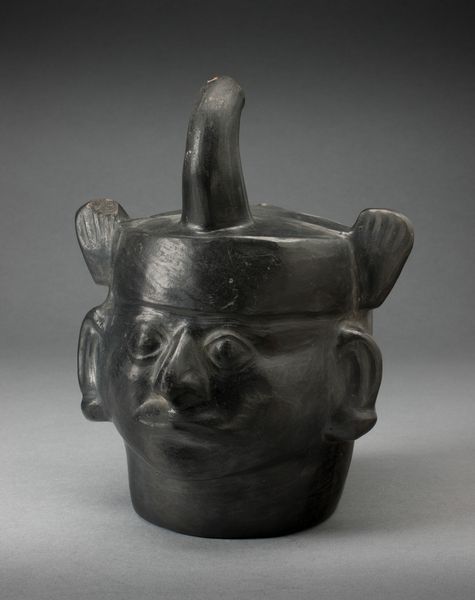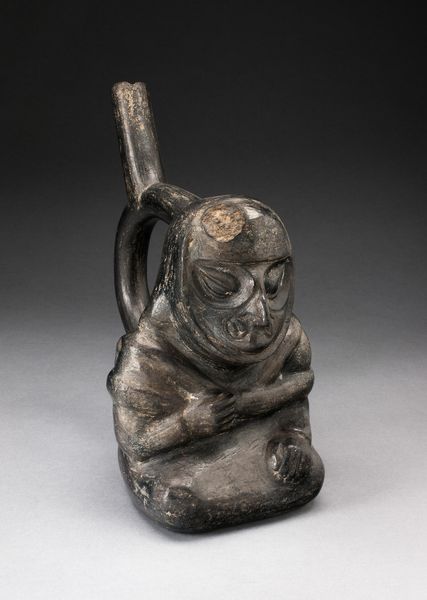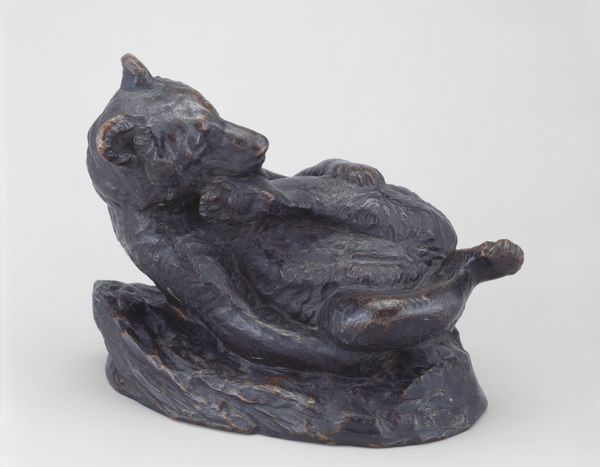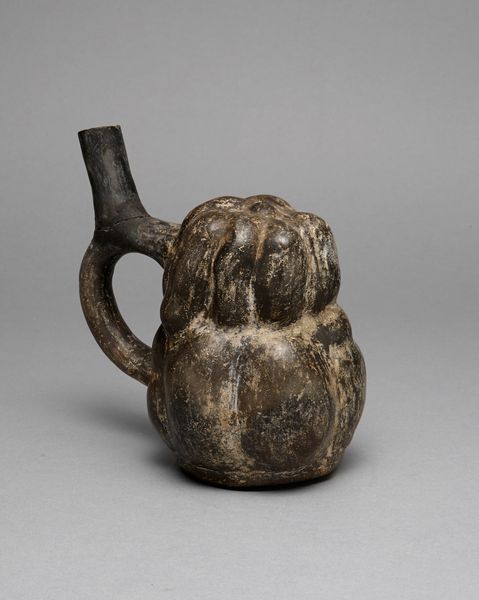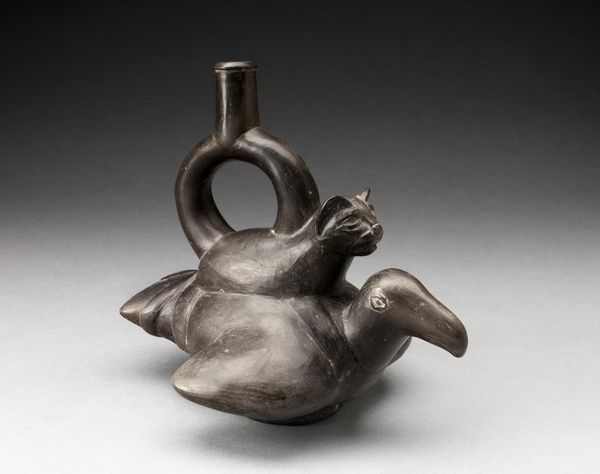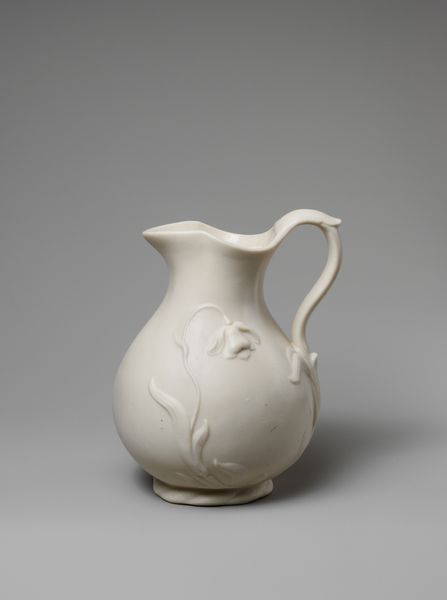
Handle Spout Vessel in the Form of an Owl with a Gourd-Like Body c. 100 - 500
0:00
0:00
ceramic
#
ceramic
#
figuration
#
indigenous-americas
Dimensions: 18.4 × 20.3 cm (7 1/4 × 8 in.)
Copyright: Public Domain
Editor: Here we have a ceramic sculpture from the Moche culture, dating from around 100 to 500 AD, titled "Handle Spout Vessel in the Form of an Owl with a Gourd-Like Body." It's quite striking! There's something simultaneously cute and imposing about it. How do you interpret this work? Curator: I'm immediately drawn to how this vessel embodies a complex relationship between the natural world and Moche social structures. The owl, often associated with wisdom and the night, might have been a symbol of power or held ritual significance. What strikes me most is how they chose to combine animal and plant imagery into a unified form, suggesting a deep interconnectedness in their worldview. What kind of statements could it possibly make about gender, or class at the time, would you speculate? Editor: Hmm, that's interesting! I hadn't considered it from that angle. The owl seems like a figure of authority. Do you think it suggests an elite male identity? The roundness of the gourd body, could that be associated with feminine fertility and a sort of submission? Or could both read instead as something else, such as androgynous? Curator: I like your observations. Considering contemporary theory, it's important to acknowledge that our interpretations are shaped by our own cultural biases. We cannot simply impose Western gender constructs onto Moche society. Perhaps the vessel represents a more fluid understanding of identity. Remember that symbols could hold different meanings across social classes. Editor: That’s a great point. So, viewing this through a lens of cultural context is critical, cautioning us from assuming our interpretations apply universally. Curator: Exactly. And questioning the power dynamics inherent in art historical narratives allows us a more nuanced understanding of the past. Editor: It has broadened my understanding significantly! It seems that looking at indigenous artworks requires acknowledging our inherent biases and understanding intersectional layers such as class, power dynamics, or the significance of symbolic objects such as plants or animals. Curator: Precisely! By examining artworks through these lenses, we can develop a more socially aware perspective.
Comments
No comments
Be the first to comment and join the conversation on the ultimate creative platform.
